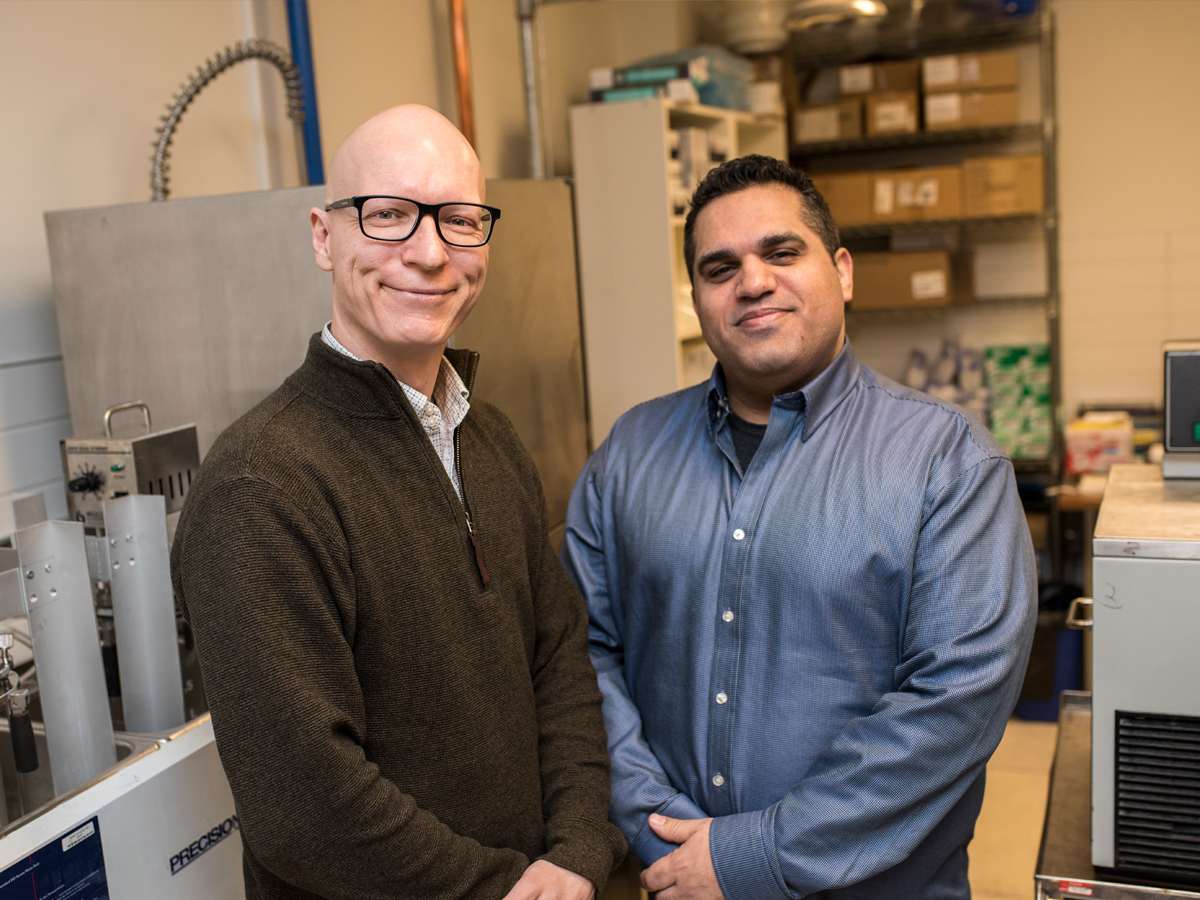Research duo develops foods to keep us feeling full longer

Dérick Rousseau and Nick Bellissimo team up to examine the effects of food once it enters the body in order to find the most satisfying foods. Photo credit: Carrie Duncan
Dérick Rousseau (Chemistry) and Nick Bellissimo (Nutrition) are leading a cross-disciplinary team to explore the place where food science and nutrition intersect. Their work is looking to solve the age-old problem of creating satisfying yet delicious foods that will tide us over between meals and prevent weight gain.
The duo are using reverse engineering to understand how foods and their components contribute to the cessation of eating and whether foods can be re-designed in a simple manner with everyday ingredients to make them more satiating.
According to Rousseau, the Dedicated Ryerson University In-vitro Digester (DRUID) mimics different parts of our digestive system from the mouth to the stomach and small intestine. By adding compounds that imitate our digestive juices, the team’s research experiments can explore how the foods we eat are broken down and digested.
“We look at how fats, proteins and carbohydrates are released and absorbed, both in vitro using the DRUID and in vivo using clinical trials – then we corroborate the two,” said Rousseau. “What we are trying to understand is how, beyond composition, the structure of a food will have an impact on satiety. This research is highly relevant for the food industry, which is currently involved in the development of satiety-enhancing foods.”
The goal of their joint work is to examine what makes foods satiating, according to Bellissimo. “We are examining how foods break down in the gastrointestinal tract and the role of functional carbohydrates, proteins and fats on satiety,” said Bellissimo. In Rousseau’s lab, high-satiety foods are being more closely examined for their structure, using the DRUID to see where they are releasing their nutrients in the different stages of digestion. “We look at how the food breaks down and how the nutrients are released,” said Rousseau. In doing so, they can devise ways to restructure foods in order to make them more satiating. “In essence, we want to re-package existing ingredients to make a food that will make you feel fuller, longer,” said Rousseau.
Meanwhile, in the Nutrition Discovery Labs, Bellissimo is able to corroborate findings from the DRUID to determine the efficacy of new foods and components in humans.
“This work aims to improve outcomes for two inter-related conditions,” said Bellissimo. “First, we want to improve the quality of the food supply by contributing to the development of ‘better for you’ foods for individuals who are struggling with obesity. The second part is to prevent or treat the metabolic diseases associated with excess body weight.”